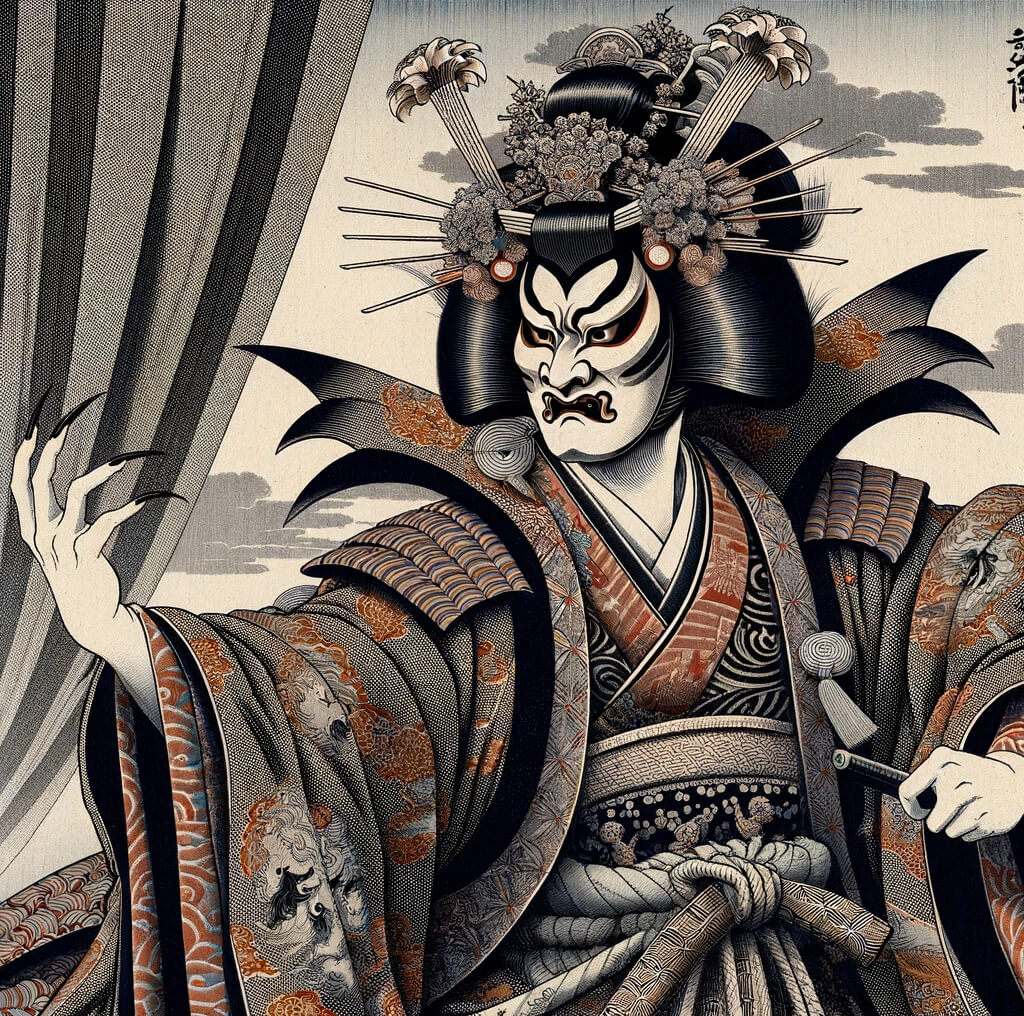Yakusha-e

Yakusha-e
Yakusha-e (役者絵), literally "actor pictures" in Japanese, is a genre of ukiyo-e woodblock prints that vividly captures the flamboyant world of kabuki theater. These prints, emerging during Japan’s Edo period, served as promotional pieces and celebratory portraits of kabuki actors, showcasing them often in dramatic makeup and elaborate costumes.
The genre was largely popularized by the Torii school, with artists like Torii Kiyonobu and Kiyotada creating early examples that set the stage for future developments. It wasn't until Katsukawa Shunshō arrived in the 1760s that prints began to feature actors in a more realistic manner, emphasizing their facial features and distinguishing them across various roles. This was a significant shift from the stylized and idealized portrayals of the Torii school.
As the genre evolved, other prominent artists like Utagawa Toyokuni and Tōshūsai Sharaku contributed their distinctive styles to yakusha-e. Toyokuni became known for his "large-head" portraits, while Sharaku was celebrated for his bold and individualized actor depictions. Despite the decline of the genre with the rise of photography, the influence of yakusha-e persisted, with contemporary artists like Tsuruya Kōkei revitalizing the tradition with modern interpretations of kabuki actors.
For collectors and aficionados, yakusha-e offers a rich tapestry of cultural history and artistic mastery. It represents not only the popularity of kabuki actors but also the craftsmanship involved in the traditional Japanese woodblock printing process.
If you are interested in exploring and collecting these historical and cultural art pieces, staying informed about new sales, exhibitions, and auction events is crucial. Sign up for updates to receive the latest news and opportunities in the vibrant world of yakusha-e and kabuki prints.
| Country: | Japan |
|---|---|
| Start of the period: | XVII century |